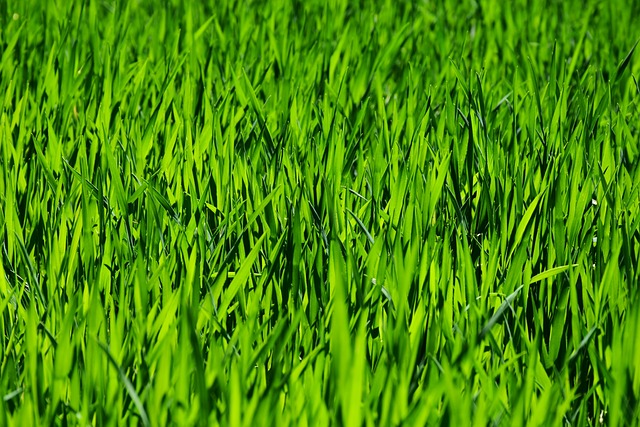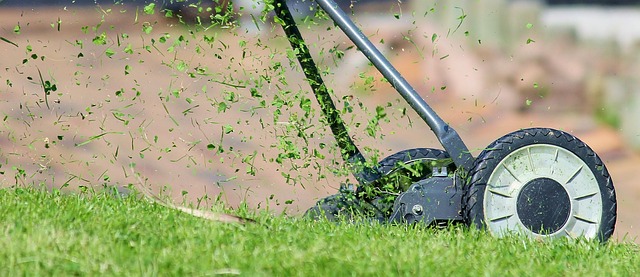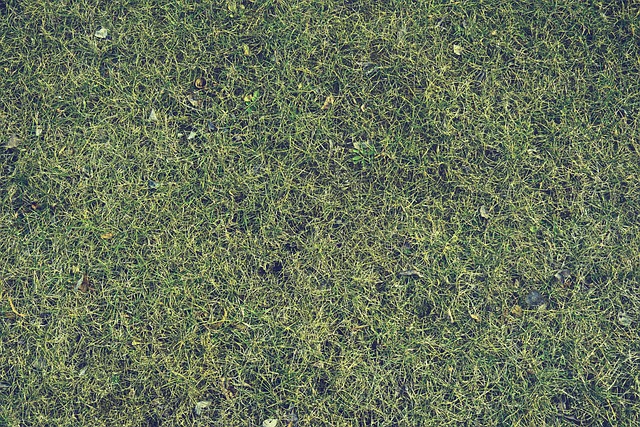Selecting suitable materials for patio and walkway installation is vital in lawn care and landscaping. Natural stones like sandstone and slate offer beauty and longevity for patios, while concrete provides cost-effectiveness and versatility. Walkways can be crafted from brick, stone, or recycled pavers for unique charm. Choosing weather-resistant materials with proper drainage prevents damage, ensuring outdoor spaces look aesthetically pleasing and endure for years. Understanding material advantages helps enhance lawn care and landscaping efforts by balancing aesthetics, durability, and practicality.
Transform your outdoor space with a new patio or walkway—an exciting lawn care and landscaping project! This guide will walk you through the process from start to finish. First, explore the world of materials, where concrete, pavers, stone, and wood offer unique advantages and styles to suit every climate, budget, and design preference. Then, learn how to create a functional yet visually stunning layout with seating areas, fire pits, and more. Finally, discover the art of installation, from preparing the substructure to maintaining longevity, ensuring your outdoor oasis becomes a cherished gathering place.
- Choosing the Right Patio and Walkway Materials
- – Different types of patio and walkway materials: concrete, pavers, stone, wood, etc.
- – Pros and cons of each material option
Choosing the Right Patio and Walkway Materials

When it comes to patio and walkway installation, selecting the right materials is a crucial step in any lawn care and landscaping project. The durability, aesthetics, and functionality of your outdoor spaces depend on smart material choices. For patios, natural stone like sandstone or slate offers both beauty and longevity, while concrete provides cost-effectiveness and versatility. Walkways, on the other hand, can be constructed from pavers made of brick, stone, or even recycled materials, each adding its unique charm to your garden.
Consider climate conditions as well. In regions with harsh winters, materials that can withstand frost and freezing temperatures are essential. Proper drainage is another vital aspect; selecting materials that allow water to flow through prevents pooling and potential damage over time. Incorporating these factors into your decision-making process ensures your patio and walkways not only look great but also stand the test of time, enhancing your lawn care and landscaping efforts.
– Different types of patio and walkway materials: concrete, pavers, stone, wood, etc.

When it comes to patio and walkway installation, there’s a world of options to suit every taste and budget. The choice of materials plays a significant role in defining the overall look, durability, and maintenance requirements of your outdoor spaces. Concrete is a popular and affordable option known for its strength and versatility. It can be molded into various designs and is suitable for both patios and walkways. Pavers, whether made from clay, brick, or stone, offer a more customizable aesthetic while providing good drainage and easy replacement if damaged.
For a natural, organic feel, consider stone or wood. Stone options like slate, granite, or limestone add a touch of elegance and are highly durable. Wood, particularly treated varieties, offers warmth and charm but requires regular maintenance to protect against the elements. Each material has its unique benefits and will impact your lawn care and landscaping efforts differently. From low-maintenance concrete to visually appealing pavers and stones, the right choice can enhance the beauty and functionality of your outdoor living areas.
– Pros and cons of each material option

When it comes to patio and walkway installation, several material options are available, each with its unique advantages and drawbacks. Stone and brick are popular choices for their durability and classic aesthetic appeal. They add a touch of natural beauty and can enhance the overall curb appeal of your lawn care and landscaping. However, these materials can be expensive and require skilled labor for installation. Concrete is another common option known for its strength and versatility. It offers a cost-effective solution and can accommodate various designs. While concrete patios and walkways are durable, they may not have the same visual charm as natural stones.
Wooden decks and paths provide a warmer, more inviting ambiance and seamlessly blend with surrounding greenery. They are relatively affordable and easy to install. However, wood requires regular maintenance like staining or sealing to protect against weather damage. Metal options like aluminum or steel are low-maintenance, durable, and can withstand harsh conditions. These materials are lightweight and easy to work with, making them suitable for DIY projects. Yet, they may not offer the same level of aesthetic appeal as other options and could be subject to rust or corrosion over time.
When it comes to enhancing your outdoor space through patio and walkway installation, the choices are vast. From concrete’s durability to pavers’ versatility and stone’s natural allure, each material offers unique benefits. Consider your climate, budget, and aesthetic preferences when making your selection. Investing in high-quality materials and professional installation can elevate your lawn care and landscaping game, providing years of enjoyment and increased property value.



